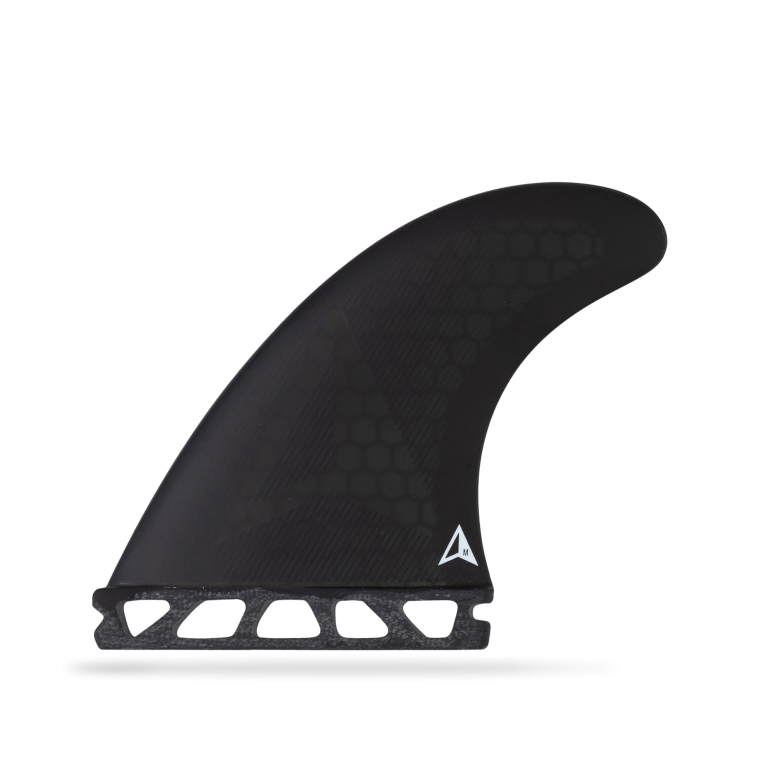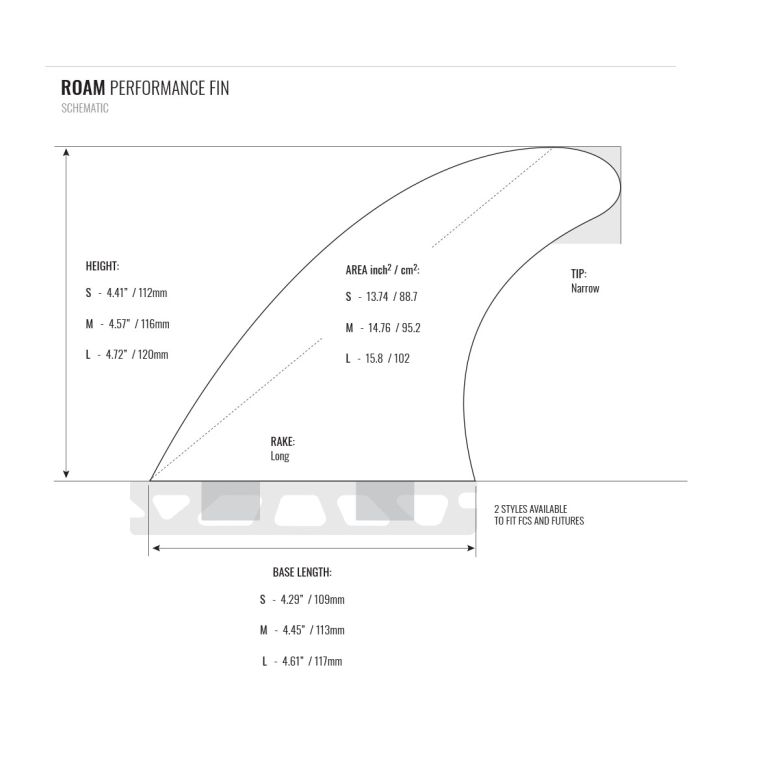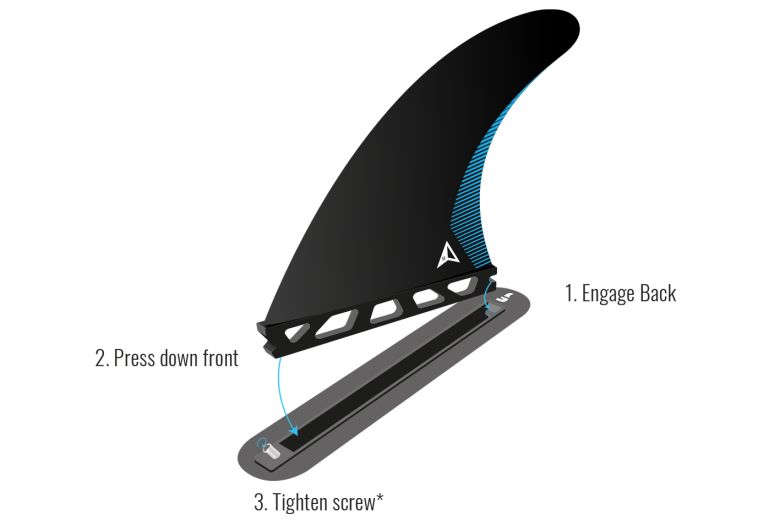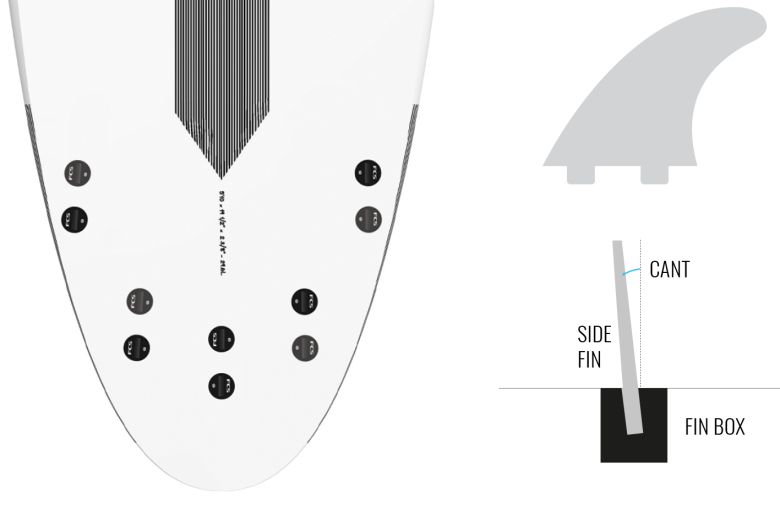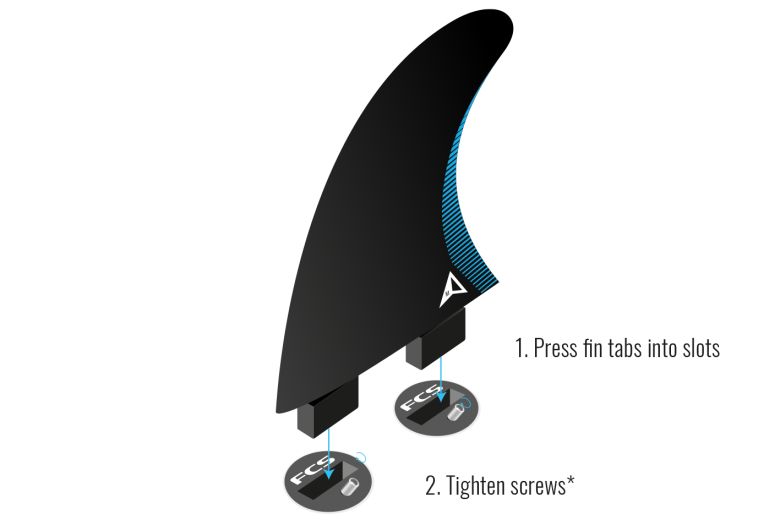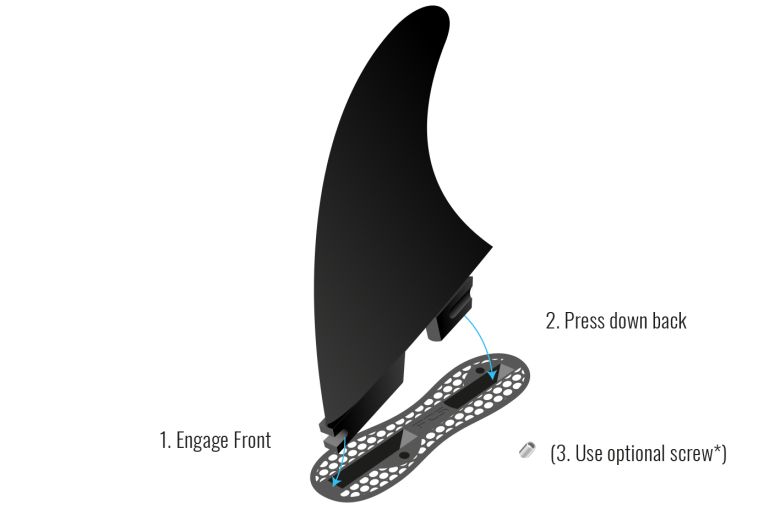Fins
As one of the largest contact surfaces in the water, fins are incredibly important to the performance of a surfboard. Different characteristics of a fin can bring out the best performance aspects of a surfboard and tailor the surfboard to types of waves, conditions and size, weight and ability of surfer.
Fins are a complex science with many contributing factors. Our Roam fin guide below breaks down and explains the key points.
FIN GUIDE
HOLD
How easily the fins release in a critical position or turn.
If you want to blow the tail or push a turn into a slide then you need the fin to release more easily. If you want to carve long arcs and like to feel engaged through turns then look for a fin with hold.
Note, less hold also means less drag so smaller fins are faster but offer less control.
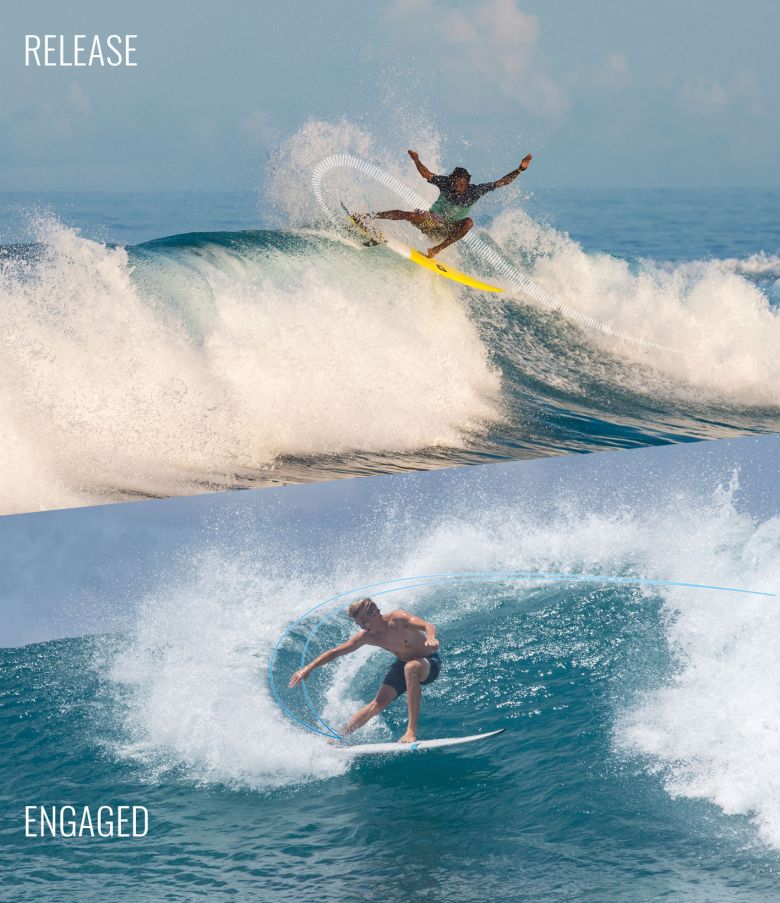
PIVOT
The length of the turning arc.
For beach breaks or vertical surfing look for an upright fin to allow sharp direction changes, ie. a loose feel. Fins with more rake are better for point breaks, larger waves and long fluid rail surfing - carvey feel. Upright fins with less rake are better for small wave boards or grovellers. Good wave boards and step-ups are good with more rake.
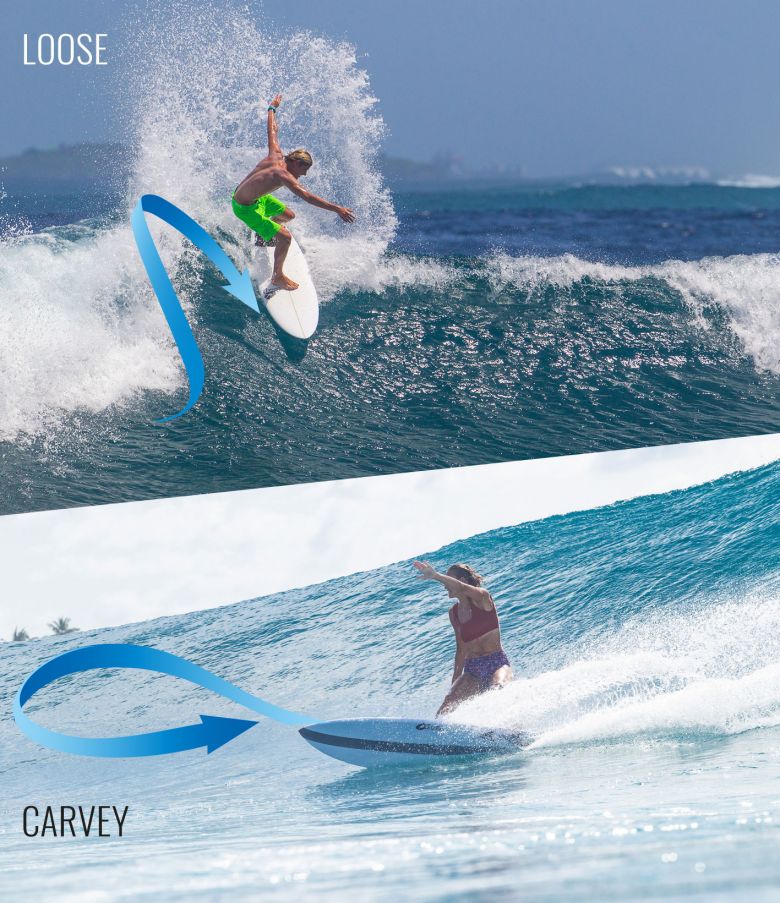
OTHER FACTORS

FIN CANT
Cant is the angle of the fin relative to the surfboard base. If a fin is perpendicular to the base ie. vertical, it has a cant of 0 degrees. More cant creates more responsiveness, less cant feels more powerful.
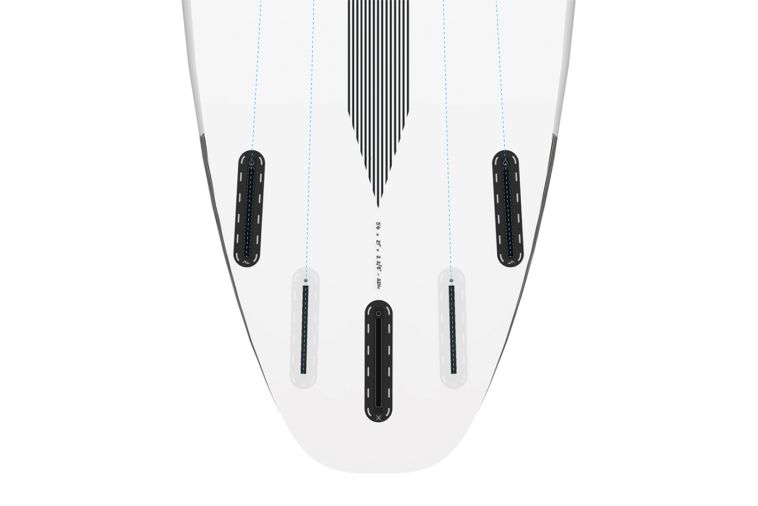
FIN TOE
Toe angle, or Toe In is the direction the side fins point in relation to the stringer or centreline of the surfboard. More toe in feels looser but adds drag. Less toe in is faster with less drag but is harder to initiate a turn.

FIN SIZE
Advice for beginner surfers: if you are between sizes - a larger fin will give you more stability to start with. A smaller fin will turn more easily.
This size chart is provided for guidance, with personal preference and surfboard style not accounted for.
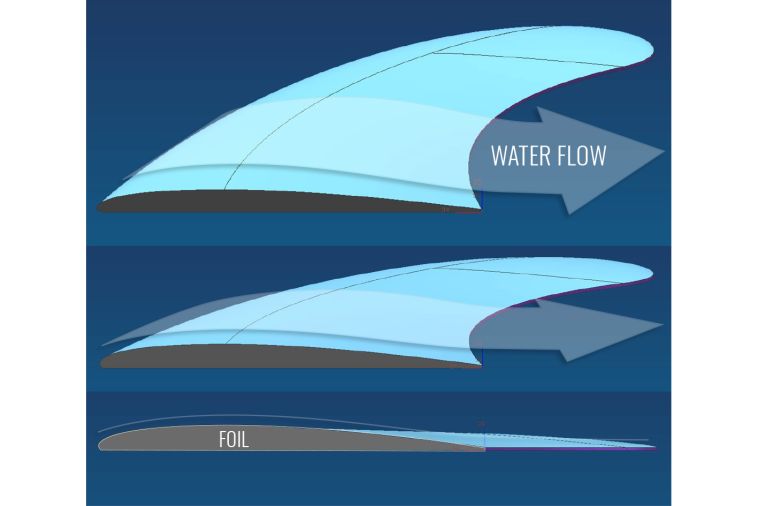
FOIL
Fin Foil has a huge bearing on performance affecting lift, drag and flex. We developed unique CAD files, 3D printed prototyping and custom RTM tooling to guarantee the right foil for the fins.
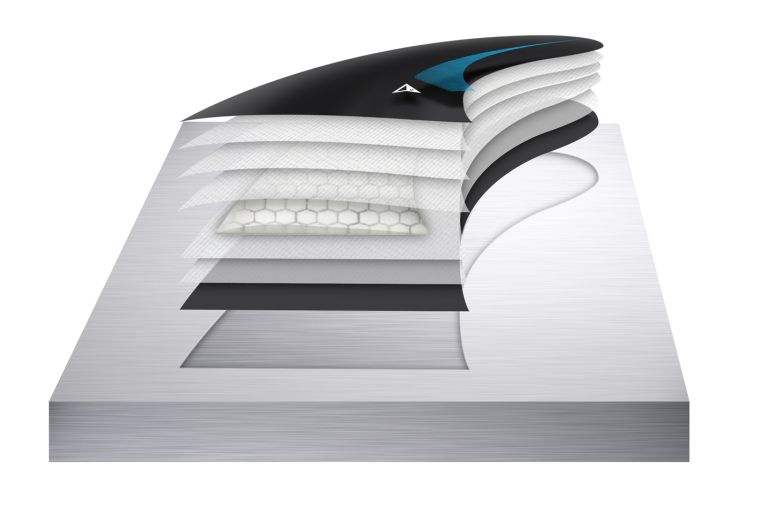
MATERIALS
RTM is the most accurate, controllable process, providing the best flex to weight ratio fin. Composite layers are placed in a mold before being injected with resin and pressed. We cut our own tooling for each fin in each size to get exact accuracy to our designs. Longboard fins are solid fiberglass for strength.
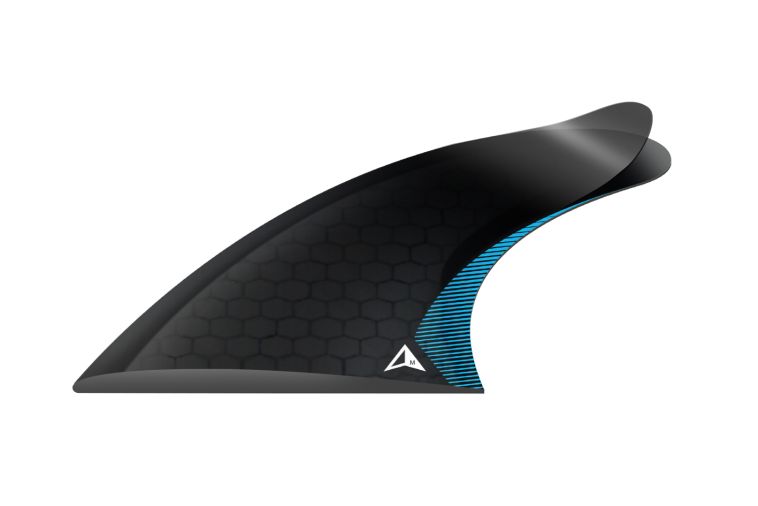
FLEX
Flex affects stability, drive and how lively a fin feels. The right amount has both powerful drive and springy release from turns. We control flex through the RTM layup - a naturally medium flexing construction and foil, with a thicker base for stiffness and thin tip for flex.
FIN SETUP

TWIN
Although historically the Twin preceeded the Thruster, think of a Twin as Thruster without the stabilising back fin (but larger side fins to compensate). The result is a much looser feeling board, able to turn much more sharply with a single pivot point on each rail. Twins are especially good in small wave boards.
FIN SYSTEMS AND INSTALLATION
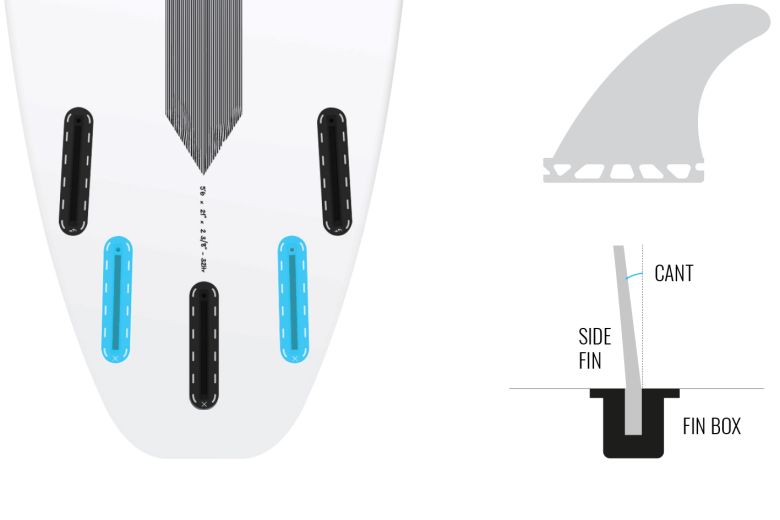
FUTURES
The Futures system has a single fin box for each fin, with a single tab the full length of the fin, held at the front with a screw.
The boxes are the same size but the side boxes are deeper than the rear. In Futures there is no cant angle in the fin boxes - the fin base has the cant angle set in the design.
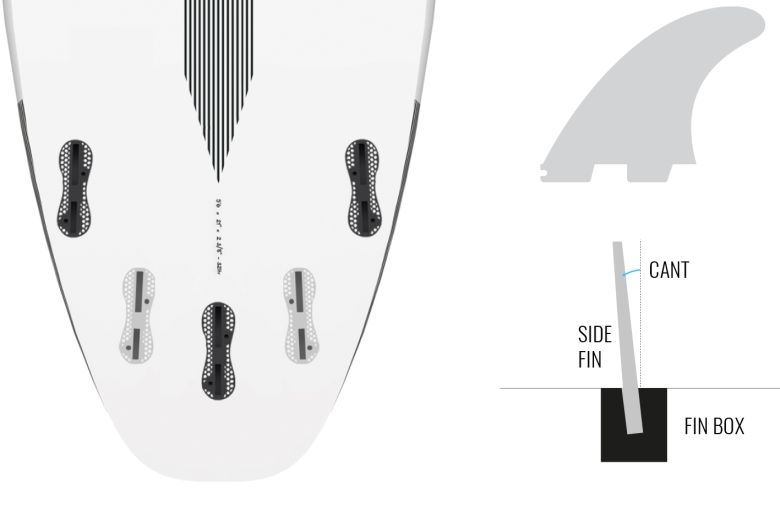
FCSII
FCS II is the newer system from FCS, requiring no screws and therefore no hex key to change fins.
FCSII fins have 2 tabs which click into place and are held by the internal mechanism. Older FCS two tab fin style can be used when secured with the optional screws. On FCSII the cant angle is built into the plugs.
* Be careful not to over tighten screw as this will strip the thread in the fin box and is expensive to repair.
ROAM Fins can be bought with either a single tab to fit Futures fin system or dual tab to fit FCS. We don’t make a FCSII fin tab, however our fins with FCS dual tabs will work in the FCSII system when secured with the optional screws (not supplied with boxes).


